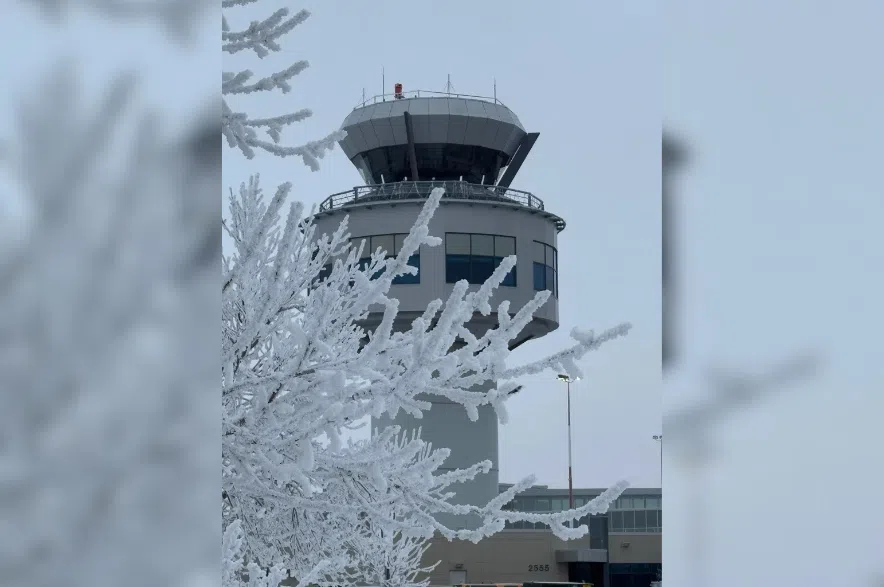The last few foggy days have caused flight diversions, delays and cancellations in Saskatoon, and it all comes down to the airport’s runway.
CJ Dushinski, vice-president of business development and service quality at Saskatoon airport, said the heavy fog that rolled through the city caused the airport to, “Go into reduced visibility operations.”
Read more:
- YXE flight diversions and cancellations due to foggy weather
- Saskatoon budget deliberations day three: What you need to know
- Teen boy arrested after fight involving bear spray, pellet gun in Meadowgreen apartment
Since Tuesday evening, that meant at least three flight cancellations and roughly eight delays, with the fog impacting pilots’ abilities to take off or land on time.
“They have to obviously have good visibility on the runway,” Dushinski said.
While other airports can operate during low visibility conditions, Saskatoon’s airport is unable to operate at the same level due to its category one runway.
Limited visibility on the runway
According to Dushinski, Canada has three different categories of runways. These categories indicate the lighting systems and instruments a runway has.
“It’s just really about the visual aids that a pilot uses to align themselves properly,” Dushinski said.
The higher the categorization number, the more visible the runway is for pilots.
With Saskatoon’s airport being a category one, it has less instrumentation according to Dushinski. So, pilots need to be able to see, “At least half a mile out.”
But, “If there’s heavy fog in the area and the pilot can’t see the runway, then they’re not going to be able to land,” Dushinski said.
Regina’s airport also has a category one runway, according to Dushinski.
In comparison, she said cities like Calgary and Vancouver have category three runway systems, “where a pilot has the ability to land in almost zero visibility.”
While the type of runway at an airport depends in part on its size, it also has a lot to do with location.
So, for Vancouver, which gets a lot of fog, it “makes more sense for them to invest in that infrastructure,” Dushinski said.
For Saskatoon, though, while there are foggy days, the bigger concerns are ice, snow and blizzard conditions. Dushinski said that’s why investments at the Bridge City’s airport are directed towards the winter months.
“We invest heavily in the equipment, so that we have the ability to move that snow and ice off the runways very effectively, very quickly to keep our operations running,” she said.
Even with some fog still lingering around, by Thursday afternoon, operations at the Saskatoon airport were “generally back to normal,” according to Dushinski, with any remaining delays being managed.











